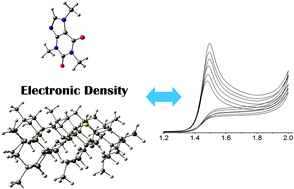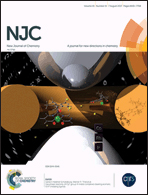Understanding the behavior of caffeine on a boron-doped diamond surface: voltammetric, DFT, QTAIM and ELF studies
Abstract
A cyclic and differential pulse voltammetry analysis by using a boron doped diamond (BDD) electrode to understand the behavior of caffeine on its surface as well as the correlation of experimental figures with theoretical calculations was carried out. Voltammetry results clearly reveal that a direct electron transfer is achieved as the main mechanistic behavior of caffeine on the BDD surface during its electrochemical oxidation. From the information provided by experimental measurements, a cluster of the BDD surface was computationally characterized to verify the interactions of caffeine with the electrode, obtaining thermodynamic parameters and geometric interactions by DFT, QTAIM and ELF calculations. According to the energetic analysis results obtained from DFT, the more and less stable geometries were thermodynamically determined, indicating that the topological data of the geometries of interactions were obtained using QTAIM and ELF to verify the influences that occurred during the interaction and relate it to interaction energy.



 Please wait while we load your content...
Please wait while we load your content...